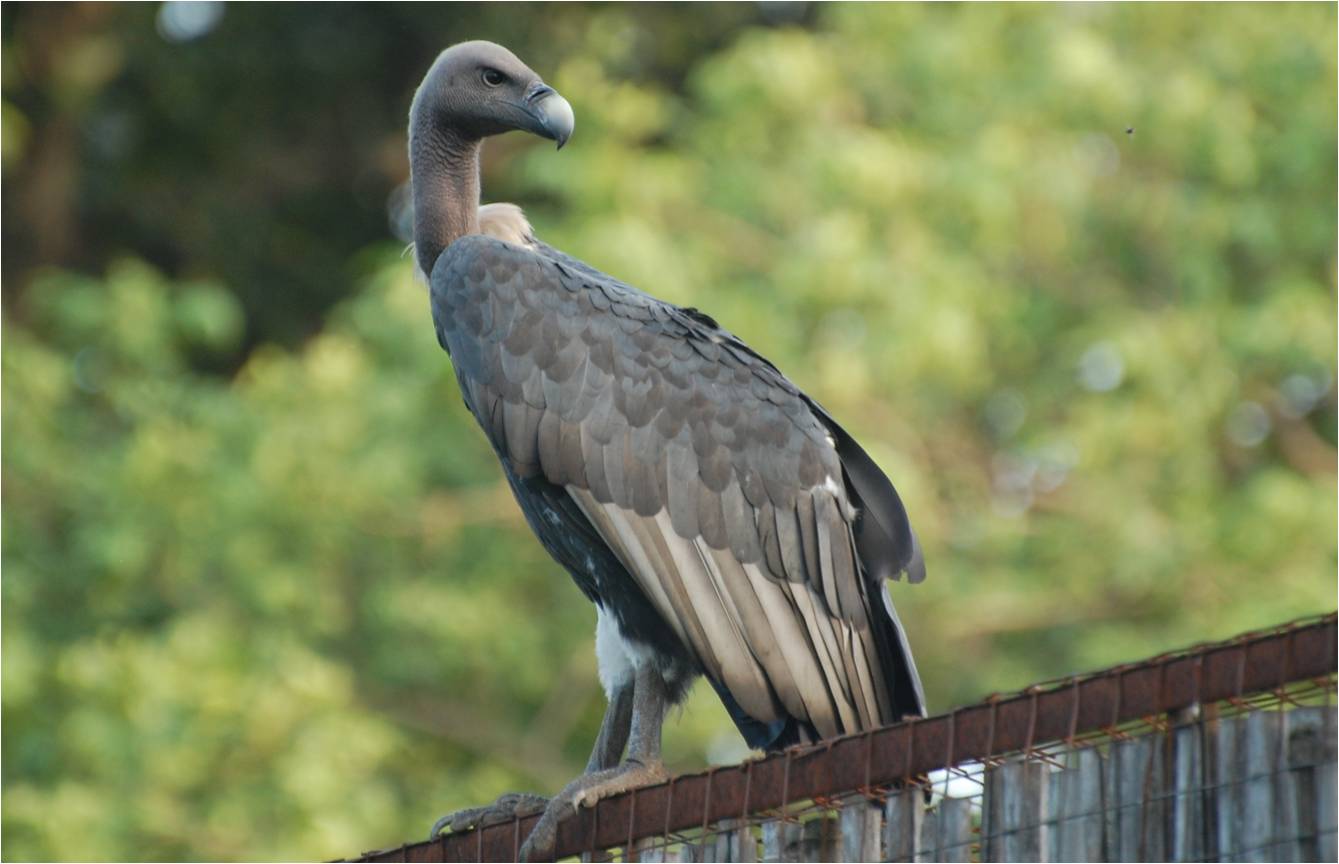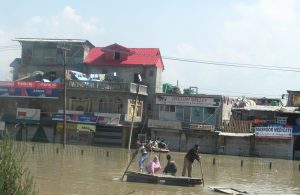Vultures, the much maligned scavengers, are critical for a clean environment but they are also critically endangered with numbers declining by more than 95% in India, Pakistan and Nepal. This is primarily due to the drug diclofenac, used to treat cattle but extremely toxic for vultures.
Once found in millions, vulture numbers have dwindled to the thousands in South Asia despite governments banning the drug. Entire species are on the verge of disappearing, experts have warned.
Plummeting numbers
In Pakistan, this is the case with at least two species – the white-backed vulture (G. bengalensis) and the long-billed vulture (G. indicus). The Egyptian vulture has also recently joined the endangered category .
While the nesting of long-billed vultures in Pakistan has always been restricted to the cliffs of Karoonjhar hills, a 25-km range of big and small sand-hills that surround Nagarparkar town of the Thar desert in the southeastern border of Sindh province, the white-backed vulture was once found all over Pakistan.
Today, the white-backed is only breeding in very small colonies in Nagarparkar and Pakistan-administered Kashmir – about 140 birds in Nagarparkar and some 50-odd in Kashmir. The last count put the long-billed vulture at about 400 in Nagarparkar.
In India, which has the largest population of vultures in the subcontinent, the situation is equally alarming with numbers plunging from 40 million to just around 100,000. Earlier, nine species of vultures thrived – white-backed, slender-billed, long-billed, Himalayan griffon, Eurasian griffon as well as the Egyptian, king, cinereous and bearded vultures.
Of these, the numbers of three species – white-backed, slender-billed and long-billed – are at a critical level. Once common across the country – from the Himalayas to southern India – the white-backed and long-billed are now found only sporadically. And the slender-billed, earlier virtually omnipresent in the northern Gangetic plains that stretch across the breadth of the country, is now found only in the eastern states of West Bengal and Assam.
In Nepal too, two species of vultures – white-backed and slender-billed – have shown shocking decline. Nepal recorded a decline of 91% in the population of white-backed vultures over a span of 15 years.
These species have declined alarmingly in the Southeast Asian region too. Their decline has been quicker than that of any other wild bird, including the dodo. For instance, the white-rumped, which once numbered several million, is now down to only 2,500-9,900 mature birds across the globe.
The tragedy has occurred due to diclofenac, the anti-inflammatory drug used to treat cattle, which is as toxic as cyanide for vultures that feed on dead cattle treated with it.
Research has identified two more drugs, ketoprufen and aceclofenac, as fatal to vultures. Exposed to the magnified impact of pesticides, heavy metals and now these drugs, the scavengers have paid the price of being the last in the food chain.
Joining hands
The crisis has united the region and resulted in a blueprint for vulture conservation under the consortium of organisations named SAVE – Saving Asian Vultures from Extinction. Earlier, in 2004, the Peregrine Fund had brought government agencies and other partners together in Kathmandu to sign a declaration to agree on banning the veterinary drug that caused the decline and agree on establishing facilities of breeding populations. The focus continues to be on diclofenac as it is the most toxic and primarily responsible for the decimation of the scavenging birds. Ketoprufen and aceclofenac are not as popular in veterinary medicine.
Two years later, in 2006, India banned diclofenac. Soon after, in the same year, both Pakistan and Nepal banned the toxic drug as well.
However, the challenges to vulture conservation persist. Though diclofenac is banned in veterinary practice, it continues to make its way to the vulture food chain through ‘human formulations’.
“Though the government banned the use of diclofenac in 2006 for veterinary use, multi-dose vials are still available for humans. Humans need a typical dose of 3ml but the vials available are of 10ml to 30 ml. These are frequently being misused to treat cattle illegally,” explained Vibhu Prakash, who heads the Jatayu Conservation Breeding Centre, the vulture conservation breeding centre of Bombay Natural History Society in Pinjore in India’s Haryana state. Prakash is also a leading member of SAVE.
Drugs that can treat cattle and are not toxic to vultures are available. But the use of diclofenac is still rampant as it has speedier results.
“Lab tests of viscera show that earlier 10% of the cattle carcasses used to have presence of the toxic drug. It has now reduced but it is still found in 2% of carcasses despite the ban,” said Rinkita Gurav, BNHS Vulture Advocacy Head.
But the situation will hopefully soon improve. The Indian government has just taken a bold step by banning the sale of multi-dose vials of diclofenac for human use.
India’s ministry of health and family welfare released a draft notification back in July 2014, but the new rules have only just come into affect. Conservationists say this is a big respite for the giant birds.
Success story
The vulture conservation breeding centre in Pinjore has been a first of its kind and has successfully bred and raised 200 vultures. In what will be a milestone in vulture conservation, Prakash hopes to release the first batch of the scavenging birds in 2016.
“It is a really challenging experiment. We are planning to radio collar and release a few Himalayan griffons just 20-30 kilometres away from Haryana. We are choosing this species first as it is not critically endangered and we will take the next step based on its success,” he said.
As diclofenac is still finding its way in veterinary medicine and these birds can fly over a range of 100 km, extra precautions will be taken to ensure they get diclofenac-free meat. Vulture safe zones are being identified.
Vulture breeding facilities have also been set up at Changa Manga in Pakistan with a tie-up between WWF-Pakistan and The Hawk Conservancy and at Chitwan in Nepal. The breeding facility at Changa holds around 20 vultures.
According to Prakash, the recovery of species is challenging even in breeding centres as vultures are slow-breeding and long-living birds. “They (vultures) only start breeding after they reach an age of 5-6 years and they lay only one egg per year. And only 15% of these eggs survive.”
Vulture safe zones are being identified elsewhere in India as well as in Nepal and Pakistan. In India, such zones have been identified around Kaziranga National Park in Assam, around the city of Ahmedabad in Gujarat as well as the Corbett national park in Uttarakhand and the Dudhwa national park in Uttar Pradesh. Each zone has a radius of 100 km. WWF-Pakistan has established a safe zone in Nagarparkar. Similarly, Nepal has also identified a vulture safe zone in Nawalparasi.
Being scavengers, vultures are usually viewed with fear and even revulsion. Raising money and awareness for their conservation has been a big challenge. But they are the globe’s ‘natural cleaners’ and play an important role in maintaining the health of the ecosystem and controlling diseases.
As BNHS director Deepak Apte put it, “Their contribution as scavengers is very important. Every single species has a crucial role; especially large animals like these have a crucial role in the complex ecological web. And it will be disastrous if they vanish.”
Ironically, vultures have long held pride of place in the culture and religion of the region. The bird figures in the Indian epic Ramayana and also plays a crucial role in the disposal of the dead of the Parsi community. Their diminishing numbers have meant that the community is being forced to look at burial or cremation.
While India, Pakistan and Nepal have joined hands to save these birds, the real success will come only when the vultures soar high in the skies again, free from any fear of drug poisoning.






